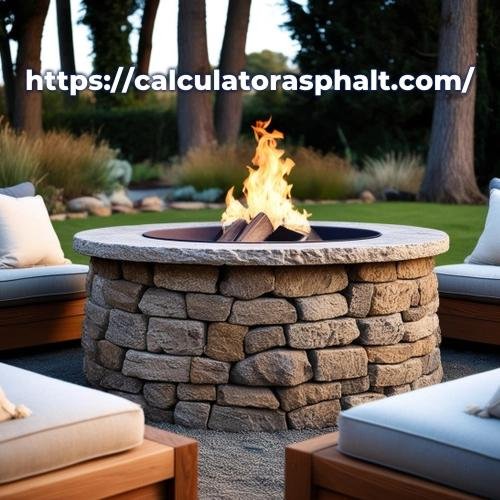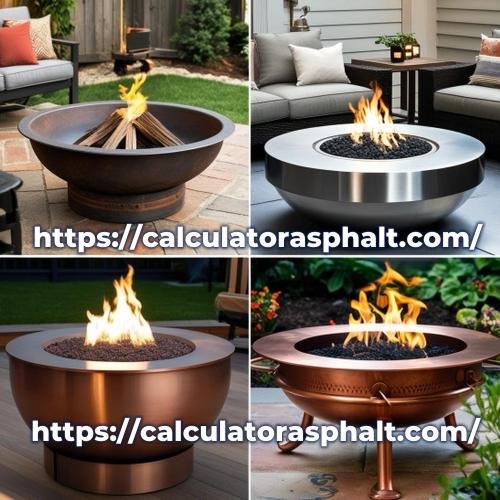A small backyard fire pit can transform your outdoor space into a cozy retreat, perfect for gatherings and relaxation. Whether you have limited room or want to create a focal point, adding a well-designed fire pit enhances both the ambiance and functionality of your yard. By incorporating materials like brick, stone, or metal, and surrounding the pit with comfortable seating, you can craft a warm and inviting area for family and friends. Even in small spaces, strategic landscaping choices such as potted plants, gravel pathways, and layered lighting can elevate your fire pit’s aesthetic, making it a standout feature of your backyard.
In-depth coverage of Various Fire Pit Styles, Materials, and Installation Methods
Fire Pit Styles
Choosing the right fire pit style can greatly enhance the aesthetic appeal and functionality of your backyard. Here are some popular styles to consider:
1. Classic Stone Fire Pits
Classic stone fire pits exude a timeless charm and blend well with natural surroundings. They are durable and can withstand the elements.
- Styles: Round, square, or irregular shapes.
- Installation: Requires digging a pit, laying a gravel base, and stacking fire-resistant stones.
- Materials: Granite, sandstone, or fire-rated bricks.
- Pros: Natural look, durable, customizable.
- Cons: Requires more effort to build, can be costly.



2. Metal Fire Pits
Metal fire pits are versatile and come in various designs, from minimalist to ornate. They are often portable and easy to maintain.
- Styles: Bowl, table, or chiminea.
- Installation: Typically ready-made, requires minimal setup.
- Materials: Cast iron, stainless steel, copper.
- Pros: Durable, heat-resistant, low maintenance.
- Cons: Can be prone to rust if not maintained.

3. Fire Pit Tables
Fire pit tables are functional and stylish, offering a central gathering spot while providing warmth. They often come with built-in seating and storage options.
- Styles: Rectangular, square, or circular tables.
- Installation: Usually requires professional installation.
- Materials: Stone, metal, or composite materials.
- Pros: Multipurpose, aesthetically pleasing, great for entertaining.
- Cons: Higher cost, requires more space.


4. DIY Fire Pits
DIY fire pits offer a personalized touch and can be a fun project. They can be made from a variety of materials and designed to fit your specific needs and style.
- Styles: In-ground, above-ground, or portable.
- Installation: Varies based on design; typically involves digging, laying a base, and constructing the pit.
- Materials: Stone, brick, metal, concrete.
- Pros: Customizable, cost-effective, sense of accomplishment.
- Cons: It requires time and effort, and there is potential for mistakes.



Fire Pit Materials
The choice of materials for your fire pit will affect its durability, appearance, and maintenance needs. Here are some commonly used materials:
1. Stone
Stone fire pits are sturdy and offer a natural look that blends well with outdoor environments.
- Types: Granite, limestone, sandstone, fire-rated bricks.
- Pros: Durable, heat-resistant, attractive.
- Cons: Heavy, expensive, requires professional installation for best results.


2. Metal
Metal fire pits are popular for their durability and sleek appearance.
- Types: Cast iron, stainless steel, copper.
- Pros: Lightweight, durable, heat-conductive.
- Cons: Can rust if not properly maintained, can get extremely hot.

3. Concrete
Concrete fire pits are modern and can be molded into various shapes and sizes.
- Types: Precast concrete, poured concrete.
- Pros: Durable, customizable, modern look.
- Cons: Heavy, can crack over time, requires sealing.
4. Brick
Brick fire pits offer a classic and durable option, often used in traditional designs.
- Types: Fire-rated bricks, clay bricks.
- Pros: Heat-resistant, durable, classic look.
- Cons: It requires mortar and proper installation, but it can be labor-intensive.

Installation Methods
The installation method for your fire pit will depend on the style and materials you choose. Here are some general steps for different types of installations:
1. In-Ground Fire Pits
In-ground fire pits are dug into the ground, offering a subtle and integrated look.
- Steps:
- Mark the area where the fire pit will be installed.
- Dig a hole to the desired depth (typically 1-2 feet).
- Fill the bottom with gravel for drainage.
- Line the sides with fire-resistant bricks or stones.
- Add a metal fire ring for added safety.
2. Above-Ground Fire Pits
Above-ground fire pits are built on the ground surface and can be made from various materials.
- Steps:
- Choose a level location.
- Lay a base of gravel or sand.
- Arrange the materials (stones, bricks, etc.) in a circular or square pattern.
- Secure the materials with mortar if necessary.
- Ensure proper ventilation to allow airflow to the fire.
3. Portable Fire Pits
Portable fire pits are pre-made and can be easily moved around your backyard.
- Steps:
- Choose a safe, level location.
- Assemble the fire pit according to the manufacturer’s instructions.
- Place the fire pit on a non-flammable surface (e.g., gravel, stone).
- Use a fireproof mat underneath if placed on a deck or patio.

4. Fire Pit Tables
Fire pit tables require more involved installation, often best handled by professionals.
- Steps:
- Choose a location with sufficient space and ventilation.
- Assemble the table frame according to the manufacturer’s instructions.
- Install the fire pit insert and connect to a fuel source (e.g., propane, natural gas).
- Ensure all connections are secure and check for leaks.
- Test the fire pit to ensure it operates safely.

Cozy Backyard Fire Pit Designs


A small backyard fire pit can provide warmth, ambiance, and a gathering spot for friends and family. By choosing the right style, materials, and installation method, you can create a beautiful and functional fire pit that suits your needs and enhances your outdoor living space.
Thank you for reading!
